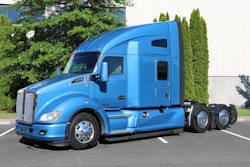Hurricanes surprise very few people. In most cases, landfall (timeframe and location) and severity are known hours – if not days – in advance, but they consistently create logistical logjams for inbound and outbound freight.
"Because freight flows in a pretty consistent and general direction, when you have these natural disasters it disrupts the freight flows that are in place. What happens is you're going to have a lot of inbound freight to those natural disaster areas – or those FEMA embargoed areas or those FEMA hotspot areas – and those inbound materials that are going in there, they're going to be the commodities needed to service the disaster – the water, the ice, the food, the lumber," said Mark Derks, chief marketing officer for 3PL BlueGrace Logistics, "but what people also don't understand is the freight that was flowing out of those areas still needs to flow out. The freight out of those natural disaster areas is also part of the demand."
Hurricane Ida affected freight in and out of New Orleans a week before making landfall Aug. 29. Inbound van volume increased 5% during August 22-28, according to DAT, while outbound volume jumped 19% compared to the previous week. Temperature-controlled shippers were also busy moving freight away from the storm, with outbound volume up 25% week-over-week.
 How can a 3PL help carriers find and haul good-paying relief loads? Find out in this week's 10-44 webisode in the video above.
How can a 3PL help carriers find and haul good-paying relief loads? Find out in this week's 10-44 webisode in the video above.
New Orleans is typically not a large flatbed market, but during hurricane season inbound loads of building materials, machinery and lumber surge in anticipation of high demand during rebuilding. Three weeks ago, inbound flatbed volumes jumped by 47% week-over-week before dropping to more typical levels, according to DAT.
Data from Truckstop.com and FTR Transportation Intelligence for the week ending Sept. 3 shows that both the dry van and refrigerated segments posted their highest weekly total (including fuel) spot rates ever, riding what the firms called the "Weather and Holiday Effect." Refrigerated volume also was at an all-time high, surpassing the prior week's record.
Lasting impact on carriers
The intersection of an affected location's inbound and outbound freight, Derks said, "constricts the capacity available for the supply chain. With that restriction or contraction of the available capacity, it starts to impact service levels, it starts to impact capacity availability in general, it starts to impact pricing, and it puts a lot of other dynamics and elements into the movement of freight in and out of those areas for both carriers and for shippers."
Impacts on freight flow, Derks said, typically are felt more than a month following a natural disaster.
"Generally what happens is when you have a natural disaster like Hurricane Ida, you're looking at a minimum of two weeks but probably more like a month – probably a good solid 30 days of disruption of this capacity and then it might take two weeks to another 30 days to reposition all of that equipment back into where its normal freight flow goes," he said.
Carriers can predict seasonality, but planning for a natural disaster takes more forethought, especially when it comes to servicing customers and potentially taking on relief and recovery work.
"What are you as a carrier going to do from a strategic standpoint? What's going to be your strategy around being proactive and prescriptive should a hurricane come in and you be a FEMA-based carrier or you work for a 3PL like BlueGrace Logistics, who is an authorized FEMA provider," Derks said,
A carrier's plan, Derks said, should be a three-pronged plan of attack that covers the carrier, the customer and the driver.
"The number one thing you do around planning and strategy is elevate communication," Derks said, noting the importance of all interested parties knowing the action plan in the wake of severe weather event. "Carriers can get ahead of the curve in communicating with their customers that, 'Hey, we are going to haul freight into a FEMA hotspot, or an area that said customer is in is going to be impacted by a hurricane and that's going to impact our freight flow, it's going to impact our available capacity, it's going to impact our service and it's going to impact our pricing."
While it may feel almost counter-intuitive, Derks said carriers would be wise to work with their customers in weather-prone areas to find alternatives carriers as a failsafe.
Carriers should work with customers in weather-prone areas on disaster prep. Check out the video above.
"Don't solely rely on just me the carrier," he said. "Build a deeper hurricane season routing guide or build a deeper bench of other carriers that can come in during these times and relieve some of the capacity constraints."
Most businesses, especially those in storm-prone areas, have business continuity plans that spell out how business operations should continue in the wake of widespread damage or prolonged outages, and Derks said carriers should involve themselves in that planning.
"Most shippers, especially large ones, are going to have continuity plans for when natural disasters happen," he said. "Get your hands on those plans and talk with your customers about how you can be a part of their continuity planning and how your assets and how your drivers can be a part of that."













